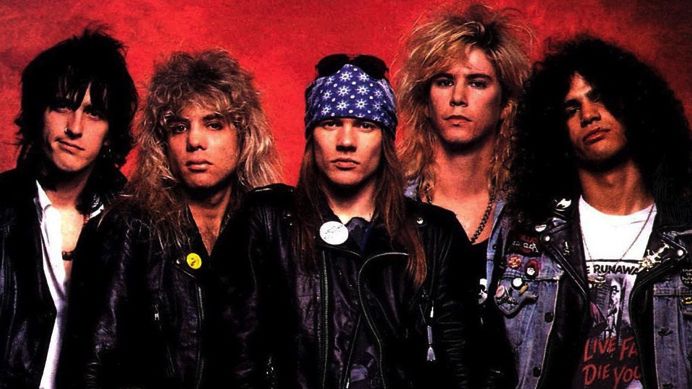For Mike, he has two main guilty secrets – loving Guns N’ Roses and loving tooty fruity Sauvignon Blanc.
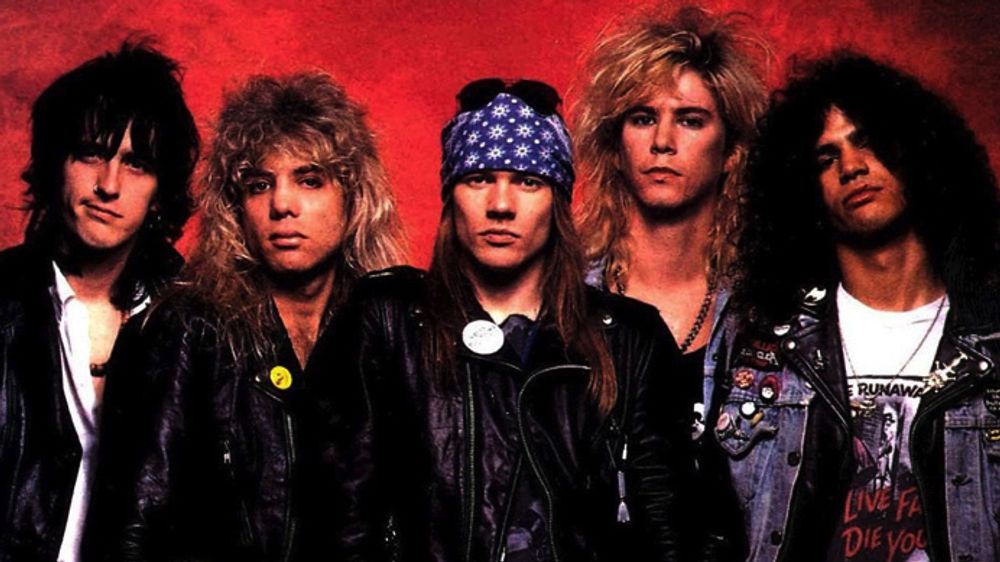
The original GNR line up changed the face of 80s Rock, well for me anyway… © Kerrang Magazine
Two summers ago I fulfilled an ambition I’d had for as long as I can remember. I went to the London Stadium and watched the mighty Guns N’ Roses. OK, it wasn’t late 80s at The Troubadour or anything, and Axl Rose is looking these days like he’s angling for a gig with Jacamo, but there they were, the band I’ve loved since I was eight years old, banging out the classics like Locomotive and Rocket Queen.
Of course for many years my love of LA’s finest was a dirty little secret. Whilst everyone else started getting into the Nirvana-led grunge scene, I was still flipping my Appetite for Destruction tape that my cousin bootlegged for me. Let’s have it right, when Britpop came along I got stuck in like everyone else, and the radio never left LW Atlantic 252 from Definitely Maybe until I got sick of hearing Robbie’s Millennium in 1999. But Axl, Slash, Duff, Izzy, and Steve were always in my musical heart.
Fashion be damned, this stuff sells

Sauvignon Blanc, Sexy As F*ck! Mel Brown spot on as ever… © PBMMW
Ok so hands up out there who can relate? Who out of the rest of you have headbanged along to Paradise City over the years in the secret of your home?
OK here’s another one, who out of the lot of you are secret Kiwi Sauvignon Blanc lovers? Almost shamed by the cool kids into keeping your love of this amazing wine style confined to the solitude of your dining room.
I’ll admit it, no worries. And I know there’s a shed load of you out there. The export numbers speak for themselves and I’m definitely not drinking it all! But all you need to do is mention it in polite wine society and most people turn their nose up so far you can nearly see all the way into to their brain.
Sauvignon Blanc from New Zealand is a global phenomenon. It’s far and away the runaway success of my lifetime. From its first plantings in Marlborough in 1973, now at the insane figure of 180 million litres exported worldwide (2015).
Its unique and intense fruit flavours and zippy acidity, show off everything Sauvignon Blanc can do with a lot of sunshine and a long growing season. As long as the grape growers control the vigour of the vine, then fresh and clean wine is available from all major New Zealand wine regions.
Clearly that style isn’t enough for some. Export figures suggest it’s more than good enough for the wine consumers round the world, but be it boredom from the producers or be it snobbery from the wine critics of the world, someone out there is looking for new styles of Kiwi Sauvignon Blanc. On a recent trip to New Zealand I got to try quite a few, and came away with my own opinions on the next steps of this wine world juggernaut.
Bringing wine to the low alcohol lovers
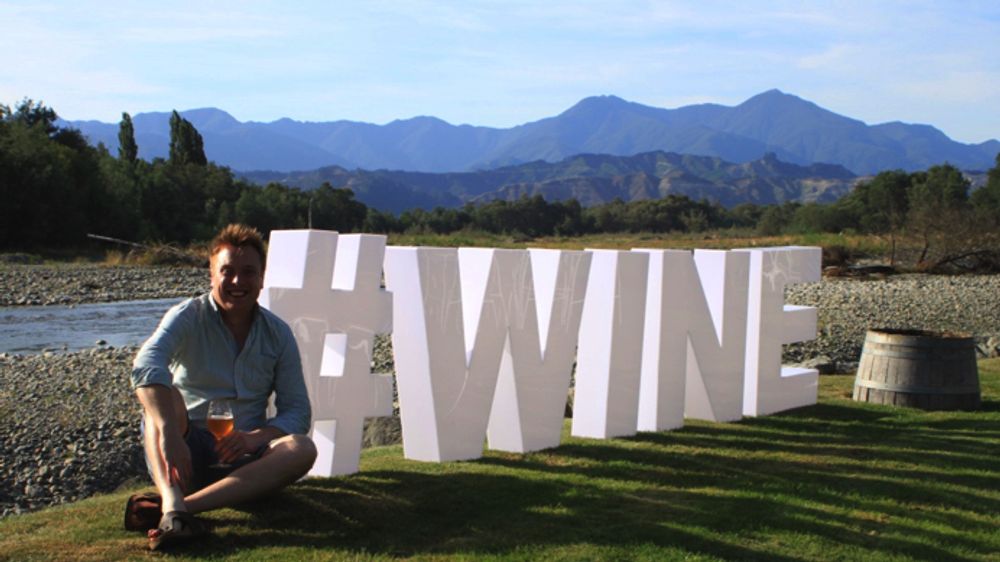
Let’s keep wine relevant for the “healthy” drinkers ©PBMMW
Dr David Jordan, a thoroughly nice man it has to be said first up, proudly presented the move in New Zealand for lower alcohol wines. The wine world has struggled in the past to offer high quality low-or-zero alcohol alternatives in these health-conscious times. I’d argue that lime and soda is the best non-alcoholic drink in the world and it’s only £1 in a pub, so what’s the point?
I’m happy to say, however, that my experiences with The Doctors’ Sauvignon Blanc, for example, have been good. At 9.5% ABV, this wine still delivers the typical gooseberry and grassy wine that we’ve come to know and love. Given New Zealand’s dramatically high rate of sunshine, these grapes are ripening beautifully, can be picked slightly earlier, and leaving a touch of residual sugar that mercifully balances what could otherwise be troubling acidity. It’s a really nice job, now flying off the shelves in Waitrose amongst others. So much for my anti-anti-alcohol protestations!
Barrels and beyond

Plenty of examples of barrel fermented, barrel aged, aged on lees, and aged in bottle ©PBMMW
The cellar is somewhere that winemakers can really show off their skills, and the Kiwis are beginning to experiment with all the tricks. By trying out barrel ageing and fermentation, or lees ageing, they can test out methods that have been used to great success in Sauvignon Blanc heartlands like Bordeaux or Sancerre. The tell-tale “struck match” of intentional reduction becoming prevalent in more than a few.
This all seems a bit funny to me. We’re living in times where ‘natural wine’, ‘minimal intervention’, and all that kind of jargon are the buzz words and practices. Is pumping a load of cash into oak barrels or ceramic eggs what will make the difference in the long run?
Don’t get me wrong, I personally like drinking them. Anyone who’s had a glass of Cloudy Bay’s Te Koko would struggle to argue they’ve not nailed it. But New Zealand’s point of difference with that incredible aromatic profile is what’s catapulted them to the heights. To now copy other styles and proclaim “we can do it too” seems…well…maybe not pointless, but can you see what I’m getting at?
Site selection and terroir
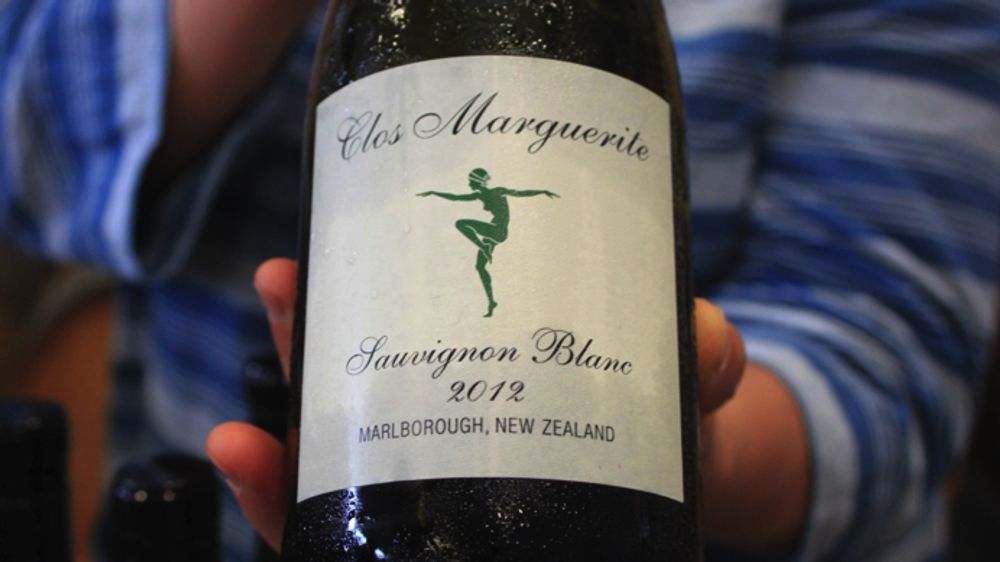
The brilliant (and currently not imported) Clos Marguerite, but no mention of Awatere Valley on the label ©PBMMW
Now herein lies one of the major ways forward as far as I’m concerned. In recent years the Kiwis have begun to push towards the sub regions, and (dare I say) the notion of terroir-specific wines. The Wairau and Awatere Valleys of Marlborough are now on the map and offer distinct differences. The riper, tropical, pungent flavours of the Wairau Valley contrast with the herby, more mineral styles from Awatere and its more noted sea influence.
Speaking to winemakers however, such as the lads from Catalina Sounds, they’re all up for a push down into the southern valleys. What can valleys like Omaka and Fairhill produce? The soils are heavier, but keep heading south (inland) and you can go cooler and drier if you so wish. No-one’s suggesting yet that that’s 100% the future, they’re just saying wouldn’t it be cool to check it out. I’m in full agreement.
OK so that’s something to come in the future, but we can already enjoy the terroir-specific differences. We’ve mentioned Awatere Valley and Wairau Valley sub regions as part of Marlborough as an overall region. Of course that’s where we’ll focus as that’s where a whopping 89% of NZ’s Sauvignon Blanc is planted. But search out a fuller bodied and tropical fruit Sauvignon Blanc from Gisborne in the North Island and test it against a lighter bodied, herbal, citrus option from Central Otago (the most southerly wine region in the world) and you’ll see we’ve already got options available to us.
Is there anything else that could help?
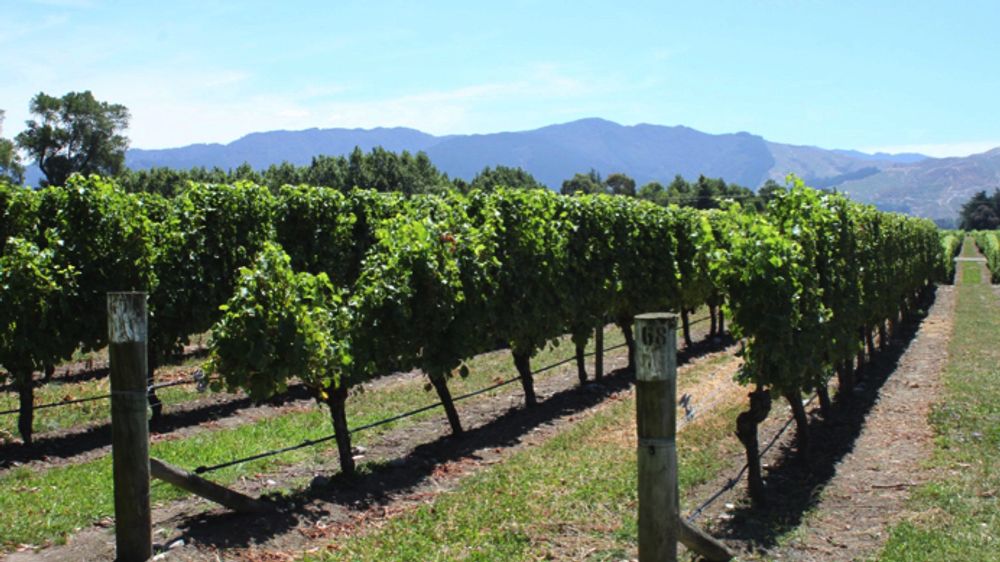
98% of New Zealand’s wineries hit sustainability targets, maybe time to raise the bar? ©PBMMW
There’s been a recent study by Lallemand Oenology about people’s preferences for Sauvignon Blanc, run by Sarah Benson, an MW student and buyer for The Co-Op. The findings state that “UK consumers prefer a citrus flavour profile….with barrel-fermented being their least favourite”. Herbal and tropical styles landed somewhere in the middle of those.
Now that would say to me that site selection and harvest timings are more important than experimenting in the cellar. And even without the report it’s where I’m at. New Zealand Sauvignon Blanc is brand that other wine regions of the world would give their right arm to have, and I hope they stick to their fresh, citrus, fruit-driven aromatic bottles of loveliness.
There is, however, something I’d add. There is money being made there because of the phenomenon, and it’s time to fix the “climate change” roof while the sun is shining. OK, maybe not fix it, but at least prepare.
Impassioned sessions at the conference from Steve Smith MW, Geoff Thorpe, and Professor Roger Boulton reminded everyone that the world is changing and we need to fix what we can and prepare where we can’t. New Zealand wine’s sustainability record is outstanding in relation to the rest of the world, with 98% of wineries now achieving their standards. The next step is to raise those standards again and lead the world in eco-aware winemaking.
The climate change focus is not just on glueing yourself to a lorry in Parliament Square. People’s consumer choices are increasingly affected by their desire to see change. You want to impress Gen X or Gen Y or the soon to arrive Gen Z? Both morally and commercially I think it’s the right thing to do.
In summary
New Zealand Sauvignon Blanc is not standing still. The winemakers and policy makers are ensuring that current standards are upheld and they’re trying to predict and move towards standards that will be required in the decades to come. This is great. I just hope they don’t shun “BRAND SAVVY-B”, no matter what one or two detractors say, most of us love it and New Zealand needs to be confident and proud of that.
Now, everyone after me…
“Welcome to the jungle, we’ve got fun and games…”
…anyone?
Ah sod you lot!
All the talks from the conference are available on New Zealand Winegrowers’ YouTube Channel you can find here
Some brilliant speakers including Justin Howard-Snead MW and Tim Hanni MW, but at the very least please do check out Steve Smith MW, Geoff Thorpe and Professor Roger Boulton. We need to wake up about these things very quickly!
International Sauvignon Blanc Day or #SauvBlancDay is on Friday May 3
